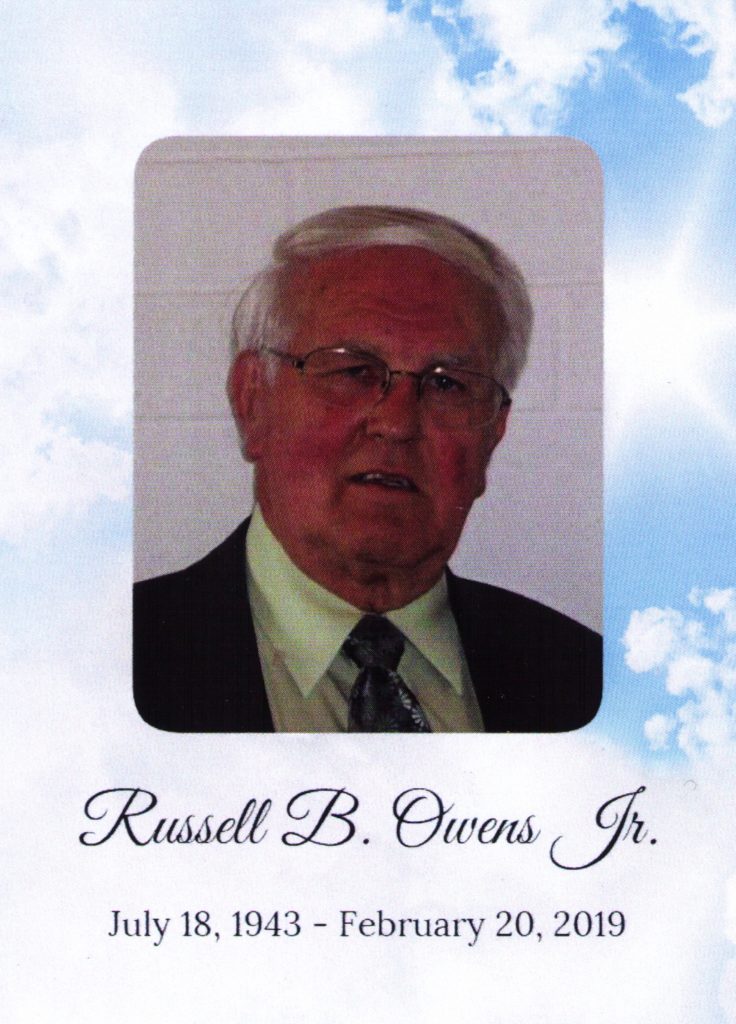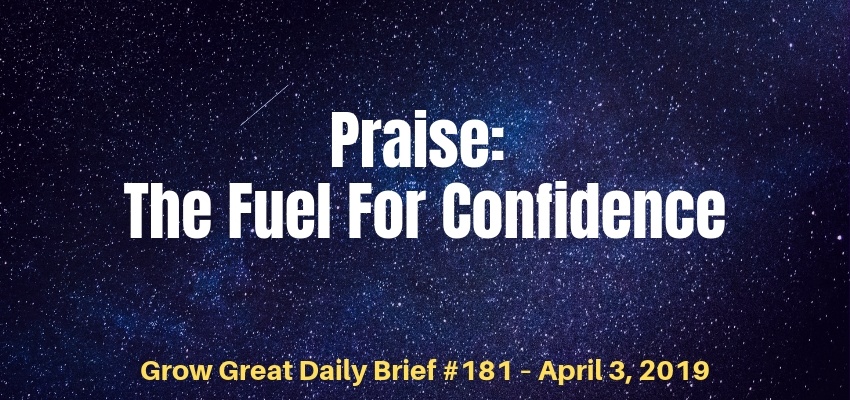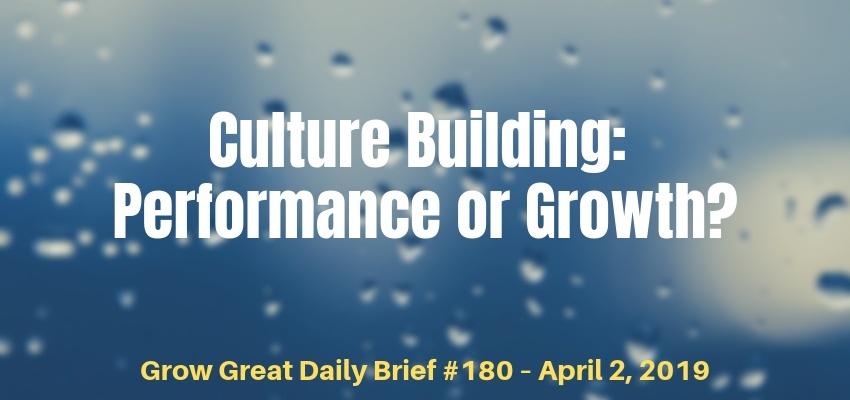Podcast: Play in new window | Download (Duration: 13:08 — 16.2MB)
Subscribe: Apple Podcasts | Spotify | Email | | More
I first heard the phrase “learning organization” in Peter Senge’s 1990 book, The Fifth Discipline: The Art and Practice of the Learning Organization. Well, to be fair, at that point in my career I noticed the term. Perhaps it was around long before that, but since I was steeped in small business and not global enterprise-level work…maybe I was late to the game. No matter, as always I was in hot pursuit of the practical application of brainiacs like professor Senge. After all, he earned a PhD from MIT over 3 decades ago.
High performing teams and organizations were more phrases that erupted from enterprise level operations. Makes sense that we should all want that. Sure beats low performing teams and organizations. However, it has spawned a bit of dialogue about performance versus growth.
The practical man that I am, I’ve learned that performance-based cultures may not always work well over the long haul. We likely need to define the phrase though. I mean a culture where performance is prized above most else, or all else. A culture where the measurements matter most. I might describe it as a head culture over a heart culture. Performance-based cultures don’t fret about how people feel, or what they may think. The priority is on what have you done. Measurable accomplishments are the order of the day.
Nobody is slamming a focus on performance. Our organizations must perform or we cease to exist. We certainly can’t thrive if we don’t perform, and at a high level. So I find no fault in working to become or maintain our status as a “high performing company” or “team.” But we might be high performing no matter what culture we have. I’ve known high performing teams within companies where the culture was terribly unhealthy. By any measurement. I’ve known other companies that appeared to have fairly idyllic cultures, but performance was never very high.
It makes me wonder if it’s a cart before the horse notion. We look for organizations that are performing at a high level and we may incorrectly conclude that their culture is partially, or mostly responsible. Maybe. Maybe not.
What’s the sustained performance over time? What’s the growth of the company, organization or team? Are things improving, getting better? What does the consistency of the performance look like?
Two words capture my imagination and attention: purposeful and intentional. How purposeful and intentional is your team or company in developing a culture that will foster whatever it is you’re chasing?
Culture is a living thing. It can and does change over time. Reason being…culture is largely a collection of the beliefs and values that drive the behavior of the people who make up the culture. Teams and organizations tend to take on or push against, the beliefs and values of the leader (or leaders). That’s why I focus so frequently on congruency – the congruency of these values and beliefs within the collective. For example, if honesty is a primary driver value for the leader, but the top salesperson is constantly pushing against that with questionable tactics that aren’t as honest as they could be…there’s a disconnect. That disconnect damages the culture because there is incongruency.
Performance can happen without growth. Growth tends to foster higher performance. It’s a matter of what you value the most – performance or growth?
I’m nudging you to focus on growth as a means toward higher performance. It’s the ideal pathway to have your cake and ability to eat it, too. Some high performance comes at the expense of making the culture toxic. Not worth it in my opinion. You can decide for yourself.
The things needed to build a growth culture are the same qualities necessary to build a growth-focused life, a growth-oriented family, a growth-intensive group or a growth-focused team. See if you don’t find these qualities suitable for higher human performance in your leadership and higher performance among your teammates.
Let’s keep Peter Senge’s phrase in mind, “learning organization.” Any learning organization will be fixated on growth over performance.
Make it safe.
Your role, as a leader, is to provide an environment that feels safe for all your people. It means you and your entire leadership team must live and behave as role models where shortcomings, mistakes and all other errors are owned, not shoved off in a blame game. Finger pointing is out in the growth-focused company. It destroys safety and fosters excuse making.
Learn.
Early in my career I took on the role of buying merchandise for a retail company. Buyers have much better real-time data today than I had when I started. Data was very hard to come by, but I was analytical in wanting to see how well merchandise was performing. It was laborious and cumbersome, but as they say, “The numbers don’t lie.”
Well, anybody who has ever been in charge of purchasing has made mistakes. We do it in our personal lives, too. Ever bought something stupid and wish you hadn’t? Of course!
Stories were circulated in retailing circles about buyers at various elephantine companies where a buyer issued a really big purchase order for a product that performed poorly. I suspected many of these stories were myths, but they often illustrated something about the company, the subject of the story. If the company had a terrible reputation the story would go something like this.
A buyer placed a million dollar P.O. for some merchandise. The company took repeated markdowns (discounts) making multiple efforts to recover their cost. When the dust settled the company lost hundreds of thousands and the buyer was fired.
If the company had a stellar reputation the story went quite differently. Something like this.
A buyer placed a million dollar P.O. for some merchandise. The company took repeated markdowns (discounts) making multiple efforts to recover their cost. When the dust settled the company lost hundreds of thousands. The CEO made sure the buyer wasn’t fired or punished. Instead, the CEO led the parade for the buyer’s leadership team to foster her growth, and figure out what they could all learn together from the experience. As the CEO put it, “Why would I fire her? We spent a million bucks to learn that lesson.”
Growth cultures concentrate on learning. They’re curious. They seek to find out and figure out what they don’t yet know. They also seek a deeper understanding.
Try it. You may like it. Or love it.
The other day I watched a YouTube car reviewer review the 2020 Kia Soul, a quirky compact car. The reviewer gave high marks to Kia for first introducing the vehicle and even higher marks for pushing the quirkiness even higher. Yes, they take some shots from other car snobs about it, but it shows they’re willing to experiment and try things.
Companies intent on having a high growth culture put value – high value – on trying things. They don’t play it safe. They’re willing to test assumptions, ask tough questions and find out if something will work. Or not.
In short, high growth cultures are innovative. Being innovative means a willingness to try things.
Constant feedback.
Some people deride the term, feedback. For me, it’s much ado about nothing. They think feedback signifies being critical. I don’t agree. Instead, I view feedback like I do when driving a car. All the input I get while behind the wheel of my car is feedback that alerts me on things critical to my safety and my progress. Do I have enough fuel? The fuel gauge provides feedback so I know whether or not I need to make a pit stop. Am I in the right gear? I drive a 6-speed manual. The tach and the sound provide feedback telling me I need to advance to a new gear. All this may be critical in the sense that I need it, but it’s not critical in that it’s negative.
In our organizations, we need feedback from all corners. Do we share the desire to improve and grow? Then we owe it to each other to serve each other. Feedback enables us to help each other know our progress or lack of it. And it also enables us to eliminate our blind spots, reduce or eliminate our limiting beliefs, challenge assumptions and so much more.
The five C’s that are my focus may help you, as you work to build the culture you want. It begins with compassion. Without the ability to feel and exhibit compassion for one another, we’re stuck. Nothing advances until that occurs.
Once we embrace compassion we can communicate. Effective communication may not come easily, but we can pull it off. We say what we mean and we mean what we say. We bear responsibility for making sure the recipient of our communication understand properly what we intend to convey.
Next comes connection. Without the first two, this is impossible. People will never connect with you if they don’t think you care about them. And if you don’t care about them, what you communicate doesn’t much matter because they don’t want to listen to you anyway. Isn’t that how you roll?
After connection comes collaboration. That doesn’t have to mean direct collaboration or partnering, but it could mean that. It means we work together. At a more basic level, it means we’re willing to help each other.
All of that combines to give us culture. Culture can be our inner culture, our set of beliefs and values that drive our behavior and choices. It can be a culture that’s established with others – a group or team.
Pursue growth and you’ll likely find higher performance.
Be well. Do good. Grow great!
RC
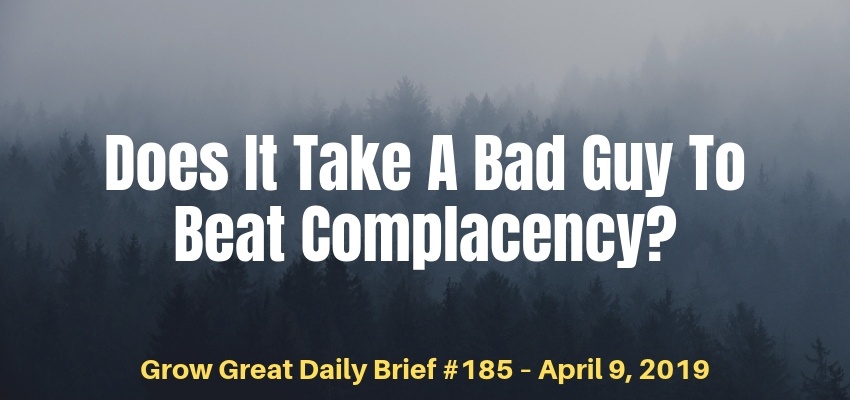

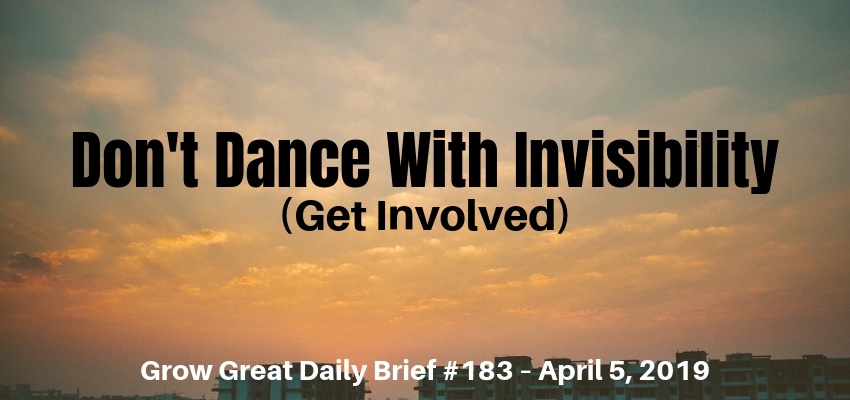
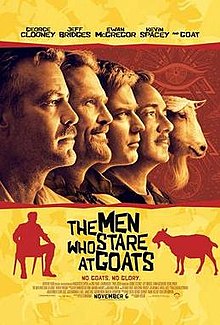 The line came from a bit of dialogue in a 2009 movie featuring George Clooney, The Men Who Stare At Goats. Clooney plays Lyn Cassady. Bob is a reporter friend inquiring about Lyn’s life.
The line came from a bit of dialogue in a 2009 movie featuring George Clooney, The Men Who Stare At Goats. Clooney plays Lyn Cassady. Bob is a reporter friend inquiring about Lyn’s life.
